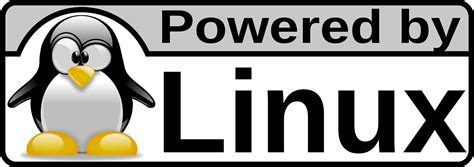
Good Reasons for Linux as your daily driver
Linux stands out as a consumer operating system thanks to its unique blend of freedom, performance, and community-driven innovation. Whether you’re on a budget laptop, building a media center, or seeking a secure daily driver, Linux delivers. Unlike macOS and Windows, you have lots of choices that you can easily customize to your own particular workflow.
You can download, install, and use Linux without ever paying a fee. There are several easy-to-use distributions if you’re new to Linux. I am a fan of Linux Mint Cinnamon, but you can just as easily use Fedora or Ubuntu. You don’t have to settle for a particular look and feel. You have many choices for desktop window managers. I love the Cinnamon desktop, whether on Linux Mint, Fedora, or Ubuntu. I think Linux Mint’s rendition of Cinnamon is the easiest for Linux newbies. If you’re not a fan of Cinnamon, consider installing Gnome, the default on most Linux distributions. For older computers, if Cinnamon, Gnome, or KDE doesn’t suit your needs, you can try Xfce, Lxde, or i3.
Linux is rock solid and secure, unlike some of the competition. I have yet to have a browser hijacked on Linux. If, for some reason, you manage to trash the desktop, you can easily access and rescue your files and filesystem from the command line. When I worked as a school district technology lead, we routinely used Linux boot drives to backup and restore trashed Windows computers, which had crashed, leaving their users feeling helpless.
Linux’s permission model and massive developer community quickly patch vulnerabilities. Malware targeting Linux desktops is rare, and tools like AppArmor or SELinux add extra layers of protection. You can further protect your Linux system by using ClamAV, which you can download and install on your system from the software store on Linux distributions like Fedora, Ubuntu, and Linux Mint, or you can choose to install the application from the command line:
$ sudo apt install clamav
or
$ sudo dnf install clamavFrom lightweight window managers to fully fledged desktop environments, you control every aspect of your UI and workflow. You can swap themes, tweak boot processes, or even build your own distro with tools like Linux From Scratch.
Linux generally runs well on older hardware, too, which means you can keep enjoying your Linux computer for many years to come. With Linux, there is no programmed obsolescence, which forces you to upgrade and spend money you can use elsewhere. Many Linux distributions run smoothly on machines with limited RAM or aging processors. Distros like Xubuntu, Lubuntu, and Ubuntu Mate breathe new life into 10–15-year-old PCs, saving you upgrade costs.
There is thriving community support for the Linux distributions I have mentioned. Countless forums, subreddits, and documentation wikis ensure help is always a search away. Active user communities foster tutorials, packages, and real-time troubleshooting for virtually any hardware or software setup. Here is the Fedora Project Wiki, Ubuntu and Linux Mint.
You might explore which distribution fits your needs — Ubuntu or Linux Mint for easy desktop setup, Fedora for cutting-edge features, or Debian for rock-steady stability. If you’re too frightened to make the Linux plunge immediately, you could give it a try using VirtualBox and easily install any distribution. That lets you stay where you are familiar whether Windows of macOS. You could download any of those distributions’ iso files and create a bootable USB using Unetbootin, Rufus, or Etcher. Then you can ‘live boot’ that distribution on your hardware to ensure that wireless and other hardware work.
The kernel and distribution are just the beginning, as you will soon discover hundreds of software packages that will unleash the power of open source software in your world. Use LibreOffice for word processing, spreadsheets, presentations, and more. Own your work with open formats that don’t lock you into vendor-specific formats. Use open-source browsers like Firefox and Chromium, or proprietary offerings like Chrome and Microsoft Edge. If you’re a gamer, Linux has distributions that are well-suited for gaming. Use Steam and Proton to play your favorite games. Developers will feel at home using VSCodium for all their programming needs. VSCodium is a community-driven project that uses the MIT-licensed binaries of Microsoft’s Visual Studio Code.
Linux and open source software have so much to give, whether you’re an experienced developer, a tinkerer, or just an average user looking for a solid platform that’s designed with you and your pocketbook in mind.